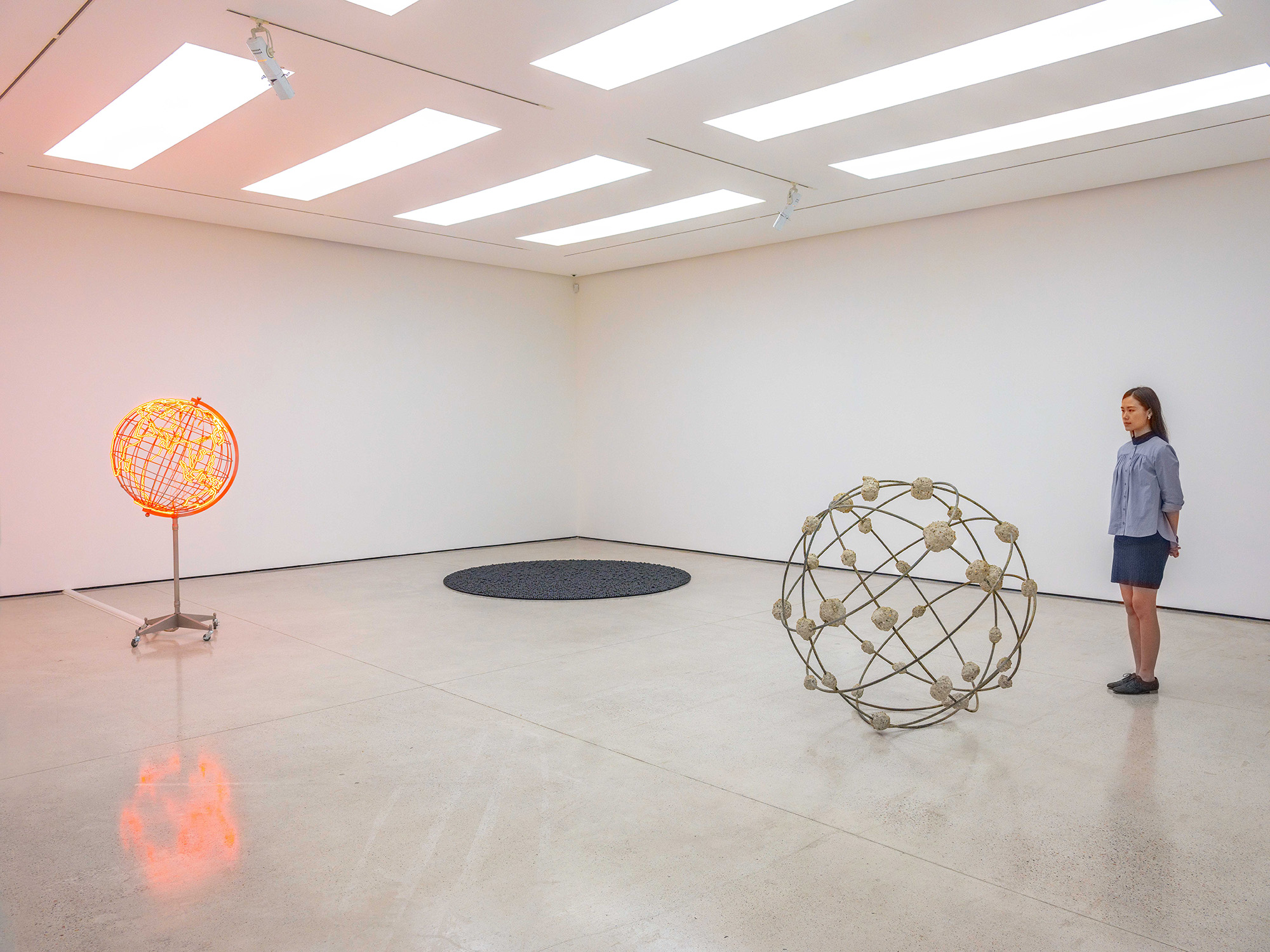Shows
Mona Hatoum’s “Remains of the Day”


Mona Hatoum’s most striking works purge the air out of the room. The Palestinian-Lebanese artist rose to prominence with the harrowing seven-hour performance Under Siege (1982), where, naked and covered in liquid clay, she would slip onto her knees again and again while trying to stand up within a large transparent container. Her multimedia works probe themes of surveillance, displacement and alienation, often in relation to her experience as a Palestinian exile. They possess the ability to simultaneously attract, repel and disturb, hinting at traumas you’ve likely never known with clarity and power. While not as all-consuming as her previous presentations, Hatoum’s first gallery exhibition in Asia at White Cube Hong Kong cut to the core of her practice, spanning the different media and salient themes examined throughout her four-decade-long oeuvre.

The exhibition began on the first floor of the gallery with works that investigate home and displacement—key concepts that recur in Hatoum’s practice. In Remains of the Day (2016–18) (a smaller version of the work of the same name that won the artist the 2017 Hiroshima Art Prize), the artist stages an eviscerated dining room. The charred remnants of six wooden chairs and a central dining table crumble piece by piece from chicken-wire frames, scattering across the gallery floor. The shell of a rolling pin, a short stool and a toy truck draw further attention to the installation’s fragile material—carbon—and underscore the absence of the human body, composed of the same element. Remains is a cogent vignette, veering on the literal, that seeks to alert viewers to the aftermath of wars, and when disassociated from the historical specificity of Hiroshima that inspired it, also evokes the destructive powers of ecological disasters.
Less well known, and where the exhibition came into its own, are Hatoum’s paper-based examinations of the minimalist grid and its positive and negative spaces. Her latticed drawings lined the walls of the gallery’s two floors. In "Frottage (Wee House)" (2017), a series of graphite rubbings of hexagonal bathroom floor tiles; "Untitled (bed springs)" (2018), large-scale lithographic prints of industrially-made bed springs; and "Drawing Heat" (2016–17), pale wax imprints of chicken wire in various gauges, subtler gestural marks that allude to the netting of a barrier or a fence take precedence over grand visual effects.
The artist’s use of symbolically laden materials was apparent in the sculpture Hair Grids with Knots (6) (2014), comprising a grid of loosely woven patches, made from several strands of the artist’s own hair. Precariously hanging off two nails hammered into the gallery wall, the laced detritus evokes a reassembling of the fragmented self, and the grid, rather than being a rigid organizational device, serves as a requiem for the cruelty of modernity—a patterned memorial for all those whose connections to their ancestors were cleaved in the process of forced immigration.

This examination of the effects of exile and displacement, and the territorial push-pull of regionalism, nationalism and globalism, was also evoked in the three spherical installations in the main upstairs gallery. Orbital I (2018), a rebar skeleton of a globe with clumps of cement and rubble, hints at the endless destruction of dwellings, while in Hot Spot (stand) (2018), red neon outlines the edges of continents, connoting a foreboding world full of conflict and exclusion. Those who have seen the more monumental version of the latter sculpture, however, might find the rendition at White Cube less compelling, as the larger iteration’s audible electrical buzz, which heightened the sense of violence and unease, was sorely missing. Contrastive to the two orbs, and laid out on the floor, was Turbulence (black) (2014), an unstable, slippery mass of several hundred black marbles that resembles a black hole. The installation obliquely threaded back to Hatoum’s ideas of the precarious and fluctuating conditions that force and allow for movement across borders and seas.
While lacking the formidable impact of her large-scale works, the exhibition included an expansive selection of pieces that nevertheless powerfully conveyed the turbulence of dislocation, and the artist’s argument that stability is a myth.
Julee WJ Chung is ArtAsiaPacific’s assistant editor.
Mona Hatoum’s “Remains of the Day” is on view at White Cube Hong Kong, until November 17, 2018.







